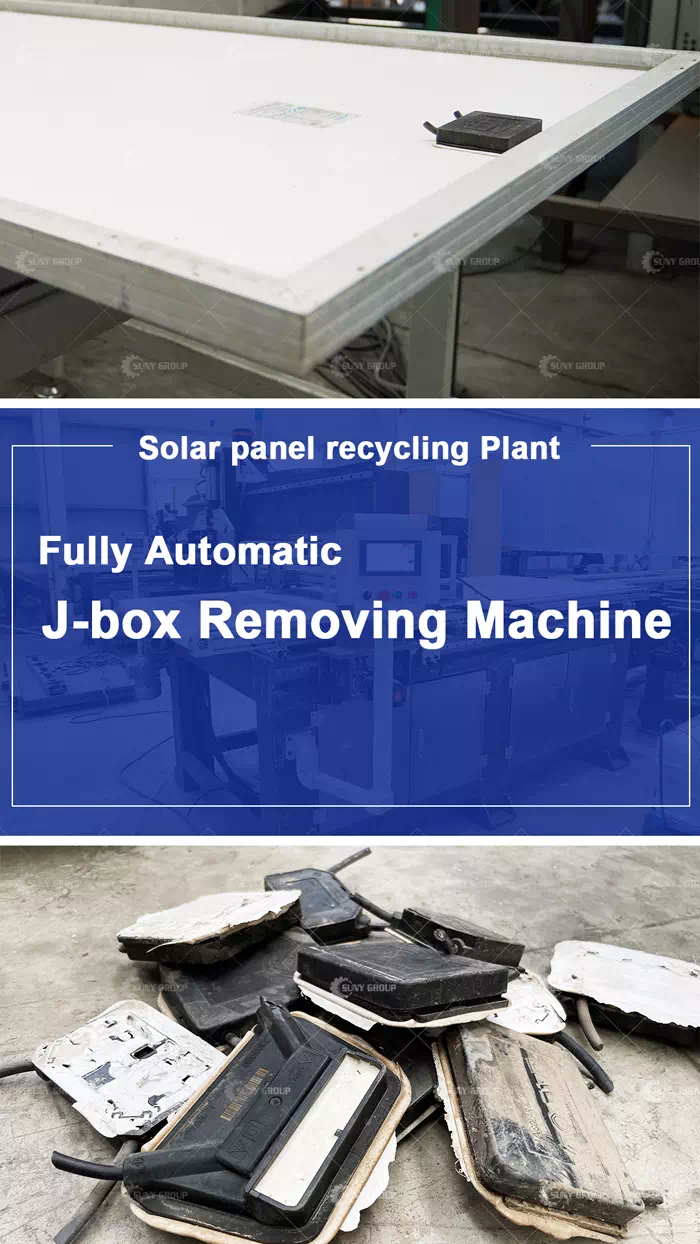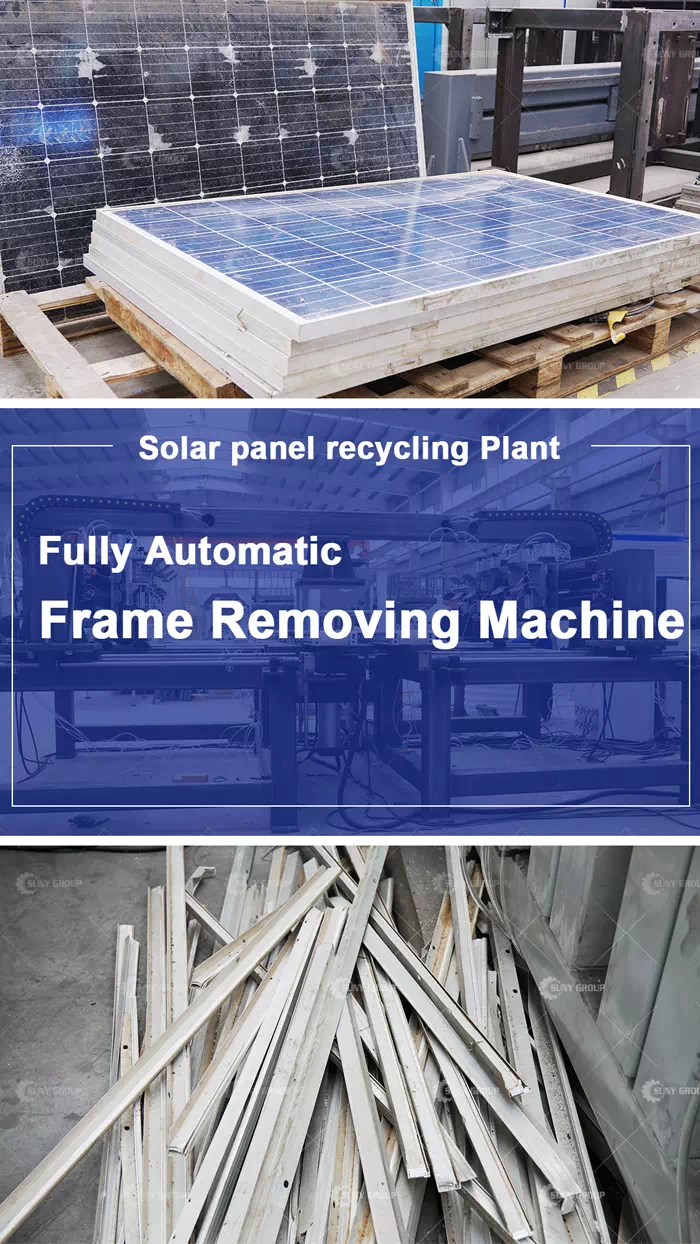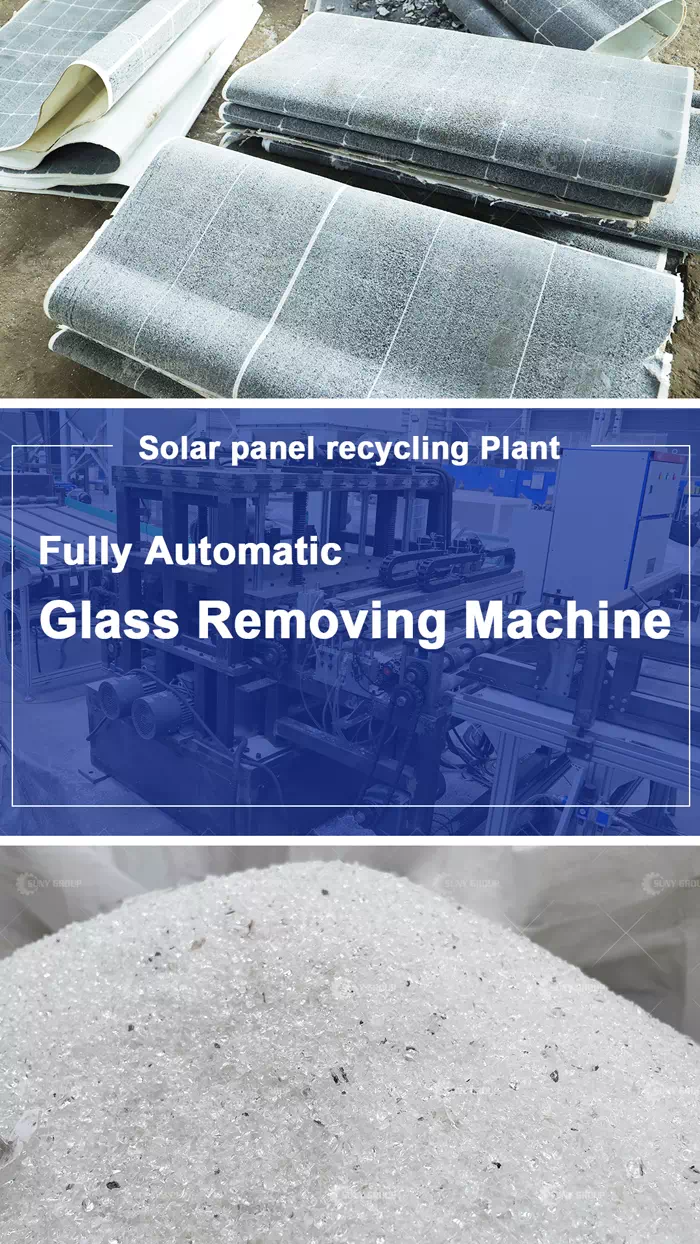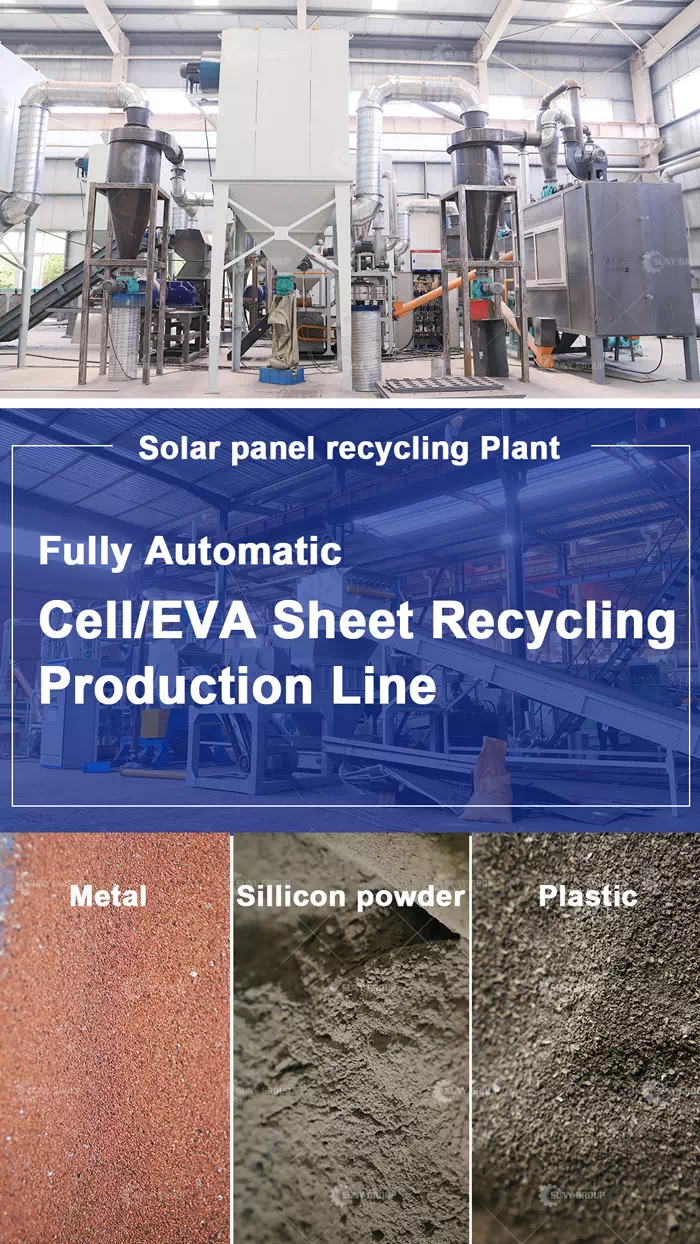Solar modules recycling technology equipment
Physical-mechanical crushing and sorting techniques are critical steps when it comes to the recycling of solar modules. These technologies and equipment can effectively separate and recycle various materials in solar modules to achieve resource reuse. The following are the technologies and equipment commonly used in the solar module recycling process, let us take a look at them:
Pre-treatment: Before the recycling process can begin, solar modules need to undergo pre-treatment. This step is intended to remove auxiliary materials from the module, such as metal frames, cables and connectors. The pre-processing stage is usually carried out using manual or semi/fully automated tools to ensure that the modules are ready for subsequent processing.

Mechanical crushing: Solar modules usually consist of glass, silicon wafers, backsheets and auxiliary materials. In the mechanical crushing stage, the modules are fed into specialized crushing equipment such as a crusher or pulverizer. These devices break the modules into small particles or fragments and preferentially remove the glass from the surface. This step helps release various materials and provides better conditions for subsequent sorting.

Sorting: Sorting is the process of classifying and separating crushed solar module particles. Common sorting methods include physical sorting, gravity sorting and electrostatic sorting.

Physical sorting: Physical sorting uses physical properties such as size, shape and density of particles for separation. By using equipment such as vibrating screens or air classifiers, particles can be sorted according to their characteristics.

Gravity sorting: Gravity sorting uses the density differences of particles to separate them. The pellets are placed on an inclined flume or slope and are separated into materials of different densities by water flow or vibration.
Electrostatic sorting: Electrostatic sorting uses the charge properties of particles to separate. By assigning charges to the particles and using electrostatic attraction or repulsion effects, particles with different charge properties are separated.
Recycling and processing: The sorted solar module particles can be further recycled and processed to achieve resource reuse.
Glass recycling: Recycled glass can go through processing steps such as washing and grinding to remove residual impurities and obtain high-quality glass fragments. These fragments can be used to create new glass objects.
Silicon wafer recycling: The recycled silicon wafers undergo chemical treatment and recrystallization to remove contaminants and impurities, and obtain high-purity silicon materials. These silicon materials can be used again to make solar cells.
Metal recycling: Metal components such as metal frames and connectors can be recycled through a process of melting and cooling and used to make new metal products.
Through these technologies and equipment, various materials of solar modules can be effectively separated and recycled, realizing resource recycling. As a professional solar module recycling equipment supplier, SUNY GROUP provides a complete recycling technology production line to provide customers with efficient and reliable recycling solutions. Our recycling technology is constantly updated and iterated to respond to evolving science, technology and market demands.
If you have any needs or questions about solar module recycling technology, please feel free to contact us. Our professional team will be happy to provide you with consultation and support to help you achieve environmentally friendly and sustainable solar module recycling.



